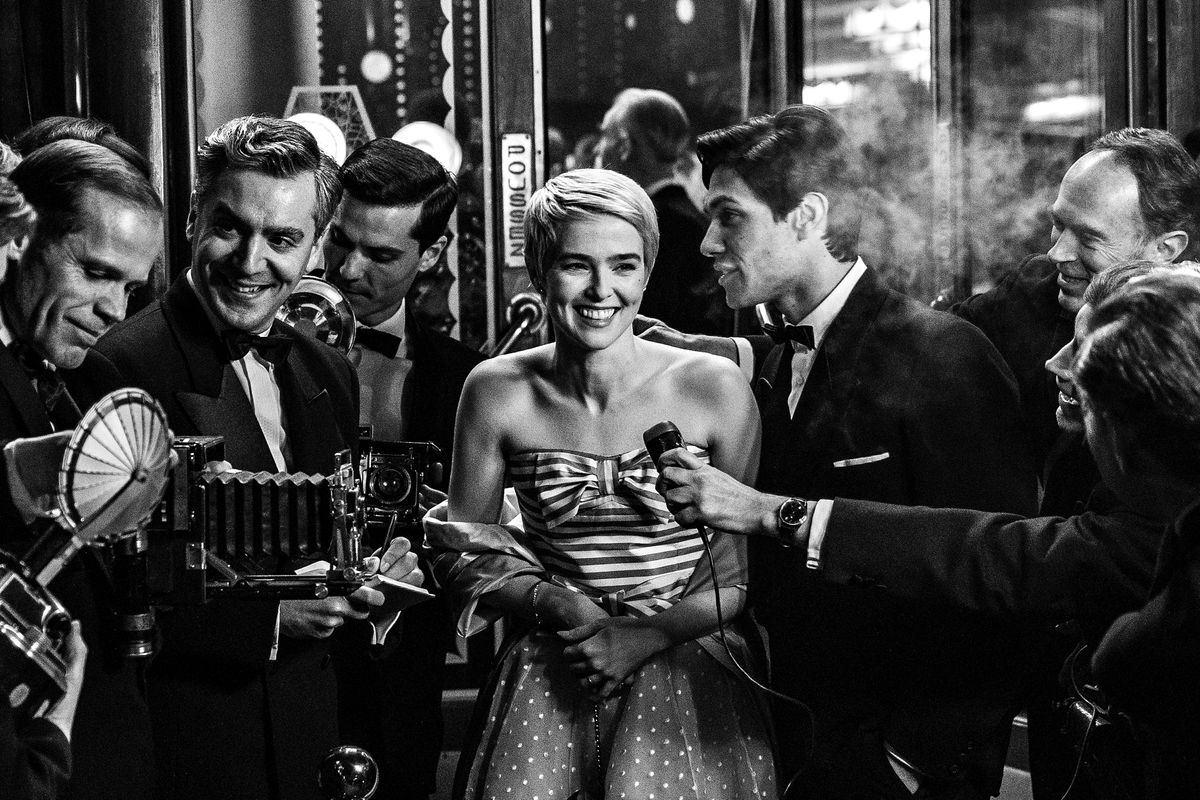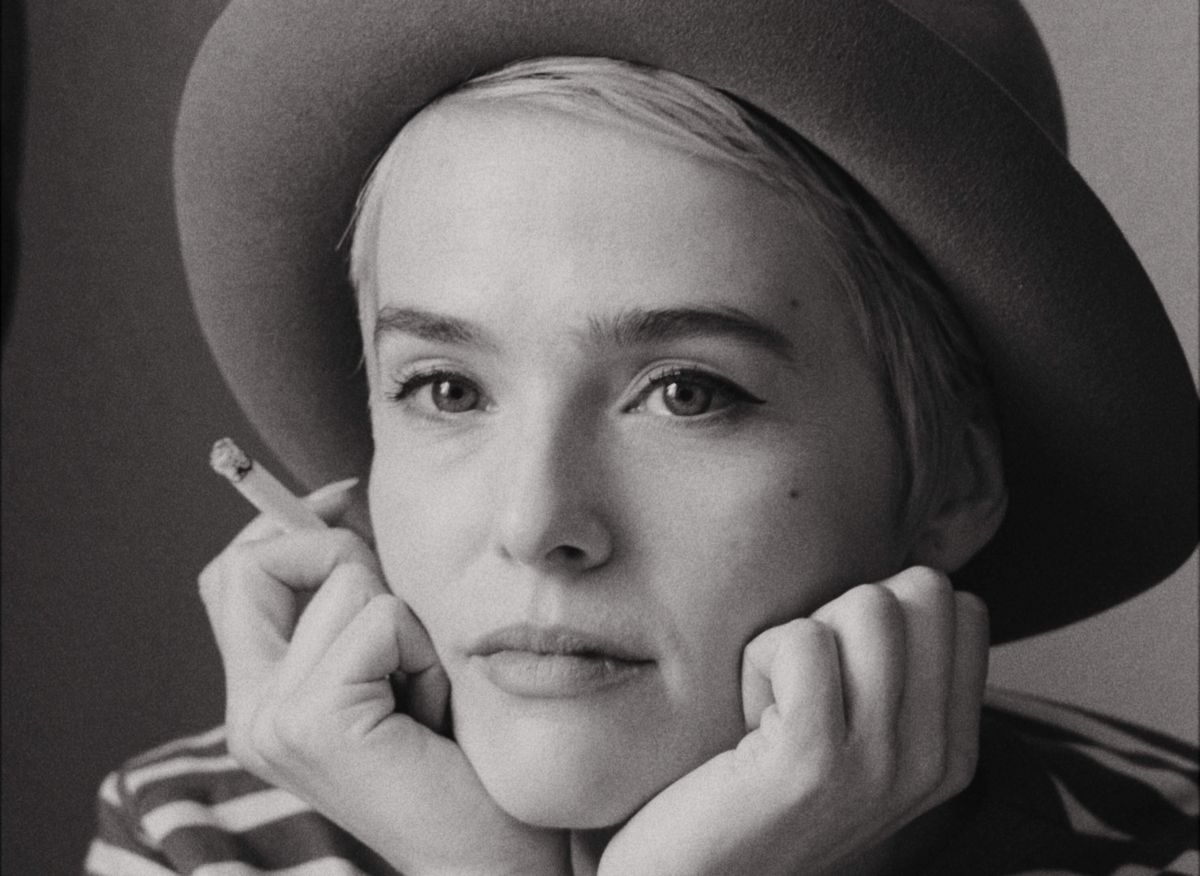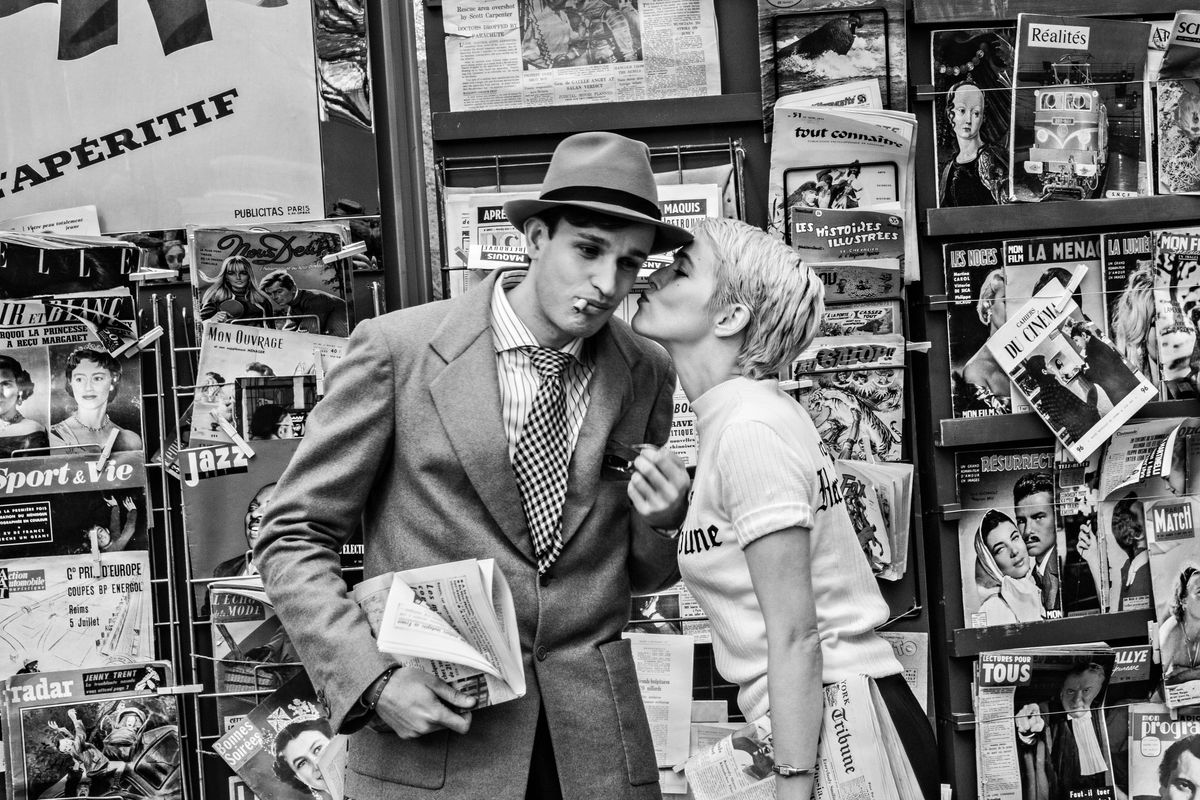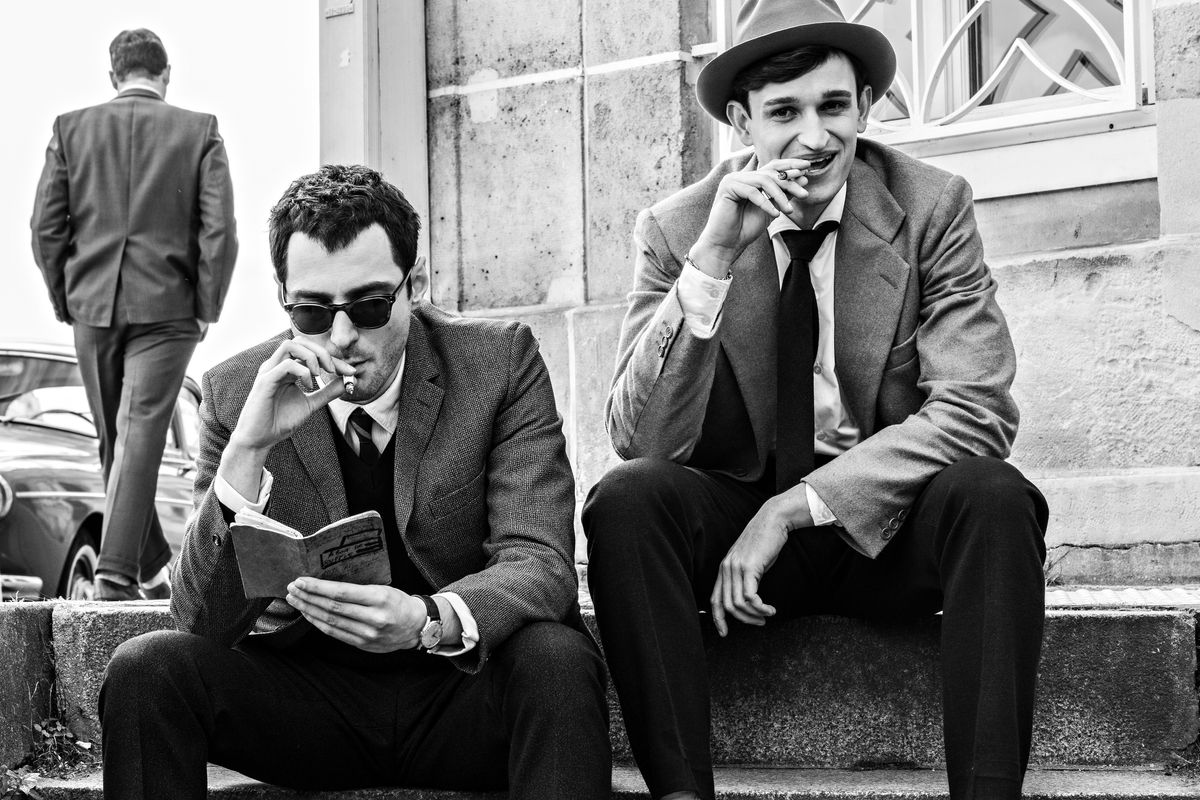Any time a notable figure of the French New Wave is introduced in Richard Linklater’s “Nouvelle Vague,” we’re treated to a momentary straight-on shot of them, with a nameplate — Claude Chabrol, Jacques Rivette, Éric Rohmer — at the bottom of the screen. It’s a little like Linklater, as he goes, is cataloging different species of the same 1950s genus, or playing a grand game of New Wave “Guess Who?”
“Nouvelle Vague” is principally about Jean-Luc Godard (Guillaume Marbeck) and the making of his landmark feature debut, “Breathless.” But it is also a wider portrait of a moveable filmmaking feast, of an entire generation of French filmmakers who were passionately engaged, individually and as one, in changing cinema. In 1959, it’s a movement that’s on the move.
To a remarkable degree, Linklater’s film, in French and boxed into the Academy ratio, black-and-white style of “Breathless,” has fully imbibed that spirit, resurrecting one of the most hallowed eras of movies to capture an iconoclast in the making. The result is something endlessly stylish and almost absurdly uncanny, even if “Nouvelle Vague” never adopts the brash daring of its subject.
Instead, “Nouvelle Vague” is more of a straightforward though deeply affectionate ode to a singularly unconventional filmmaker. The contrast makes “Nouvelle Vague” a curious thing: a meticulous recreation of a rule-breaking cinematic revolution. Godard would have hated it. That doesn’t make it any less enchanting.
At the outset of the film, Godard and company have gathered for the premiere of François Truffaut’s “The 400 Blows.” For Godard, the last of the Cahiers du Cinéma crowd to transition from writing criticism to directing, anxiety is mounting. He’s 29 and beginning to fear he’s missed the wave.
But confidence is not lacking in Godard. (Marbeck, excellent, doesn’t take off his sunglasses for the duration of the movie, including in movie screenings.) On the heels of the Cannes reception for “The 400 Blows,” the producer Georges de Beauregard (Bruno Dreyfürst, tremendous) agrees to make “Breathless.” Beauregard warily eyes Godard, likely aware of the trouble he’s making for himself. He pleads for Godard to just make a sexy “slice of film noir.”
Godard, though, knows his chance has finally come to transfer all his ideas into film. Before production starts, he visits the elder statesmen of European cinema at the time — Jean-Pierre Melville (Tom Novembre), Roberto Rossellini (Laurent Mothe) — for advice. “Shoot quickly,” Rossellini tells him.
Godard wants no lights, no soundstages and no script. He’ll go into each day not knowing what he’s going to shoot. On the first day of production, he announces: “Time to enter the pantheon.”
The bulk of “Nouvelle Vague” is the day-to-day shooting of “Breathless,” for which Godard cast Jean-Paul Belmondo (Aubry Dullin) as the small-time gangster lead and Jean Seberg (Zoey Deutch) as the Herald Tribune-selling American student he wants to run off with. (These, like so many of the many roles of “Nouvelle Vague,” are so well matched that casting director Catherine Schwartz deserves a shot at the inaugural Oscar.)
The thrill of following the making of “Breathless” day by day is seeing just how brazenly Godard disregards the assumed conventions of moviemaking. On the first day, he wraps after two hours. For Linklater (“Slacker,” “Dazed and Confused,” “Before Sunset”), these scenes have a special resonance. Few filmmakers believe more ardently in the benefits of a leisurely hangout.
But Godard’s methods have a purpose. “I’m trying to seize reality at random,” he explains.
“Nouvelle Vague” captures Godard stealing from his influences (Ingmar Bergman, Duke Ellington, Humphrey Bogart) while striving to realize his own voice as an artist. “Breathless” is a movie poised between movie eras — a deconstructionist bebop riff on a Hollywood genre film. “Nouvelle Vague,” more than anything, is about how becoming an artist requires both reverence for the past and a stubborn insistence on breaking ground on the future.
“Nouvelle Vague,” which opens in theaters Friday and streams Nov. 14 on Netflix, is one of two artist portraits by Linklater this fall, the other being “Blue Moon,” with Ethan Hawke as the tragic lyricist Lorenz Hart. Both, as it happens, have their Bogart quotes. And both are stirring, cigarette-smoking musings on what makes a great lyric, a memorable song or a movie that will live on forever.
In “Nouvelle Vague,” you wouldn’t say that it takes a village. It’s Godard’s force of will that propels “Breathless.” Each filmmaker gets a Wes Anderson-style close-up in Linklater’s film perhaps because each is pursuing a uniquely personal vision of cinema. In today’s movie world, where risk aversion and brand management carry the day, such a moviemaking spirit often feels extinct or, at least, elusive. “Nouvelle Vague,” with a young Godard making things up off the cuff and on the fly, is a reminder how less can be so, so much more. And how it’s nice, as a young filmmaker with big ambitions, to have some company.
“Nouvelle Vague,” a Netflix release is rated R by the Motion Picture Association for some language. Running time: 105 minutes. Three stars out of four.
By JAKE COYLE
AP Film Writer





